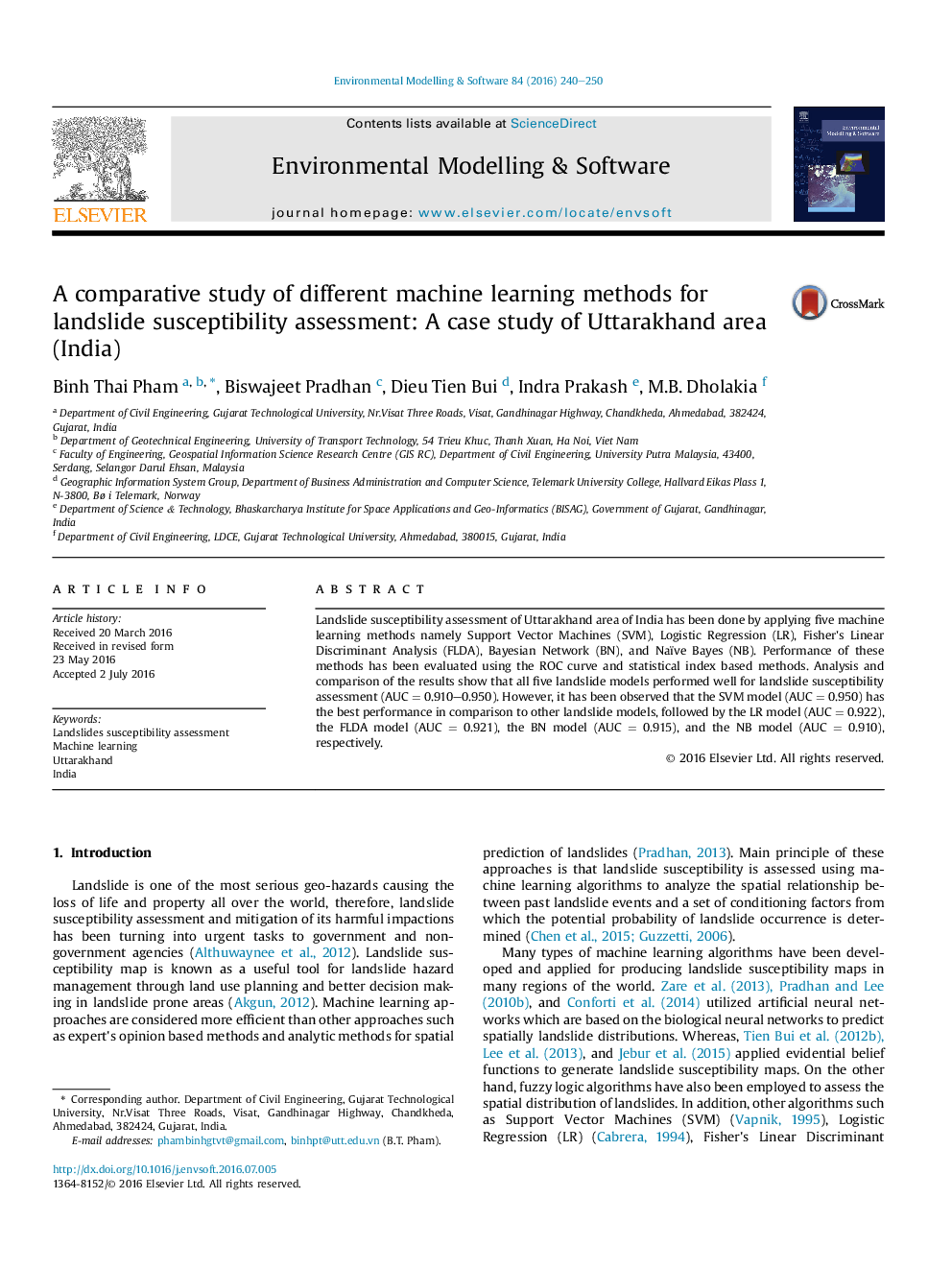| Article ID | Journal | Published Year | Pages | File Type |
|---|---|---|---|---|
| 6962342 | Environmental Modelling & Software | 2016 | 11 Pages |
Abstract
Landslide susceptibility assessment of Uttarakhand area of India has been done by applying five machine learning methods namely Support Vector Machines (SVM), Logistic Regression (LR), Fisher's Linear Discriminant Analysis (FLDA), Bayesian Network (BN), and Naïve Bayes (NB). Performance of these methods has been evaluated using the ROC curve and statistical index based methods. Analysis and comparison of the results show that all five landslide models performed well for landslide susceptibility assessment (AUCÂ =Â 0.910-0.950). However, it has been observed that the SVM model (AUCÂ =Â 0.950) has the best performance in comparison to other landslide models, followed by the LR model (AUCÂ =Â 0.922), the FLDA model (AUCÂ =Â 0.921), the BN model (AUCÂ =Â 0.915), and the NB model (AUCÂ =Â 0.910), respectively.
Keywords
Related Topics
Physical Sciences and Engineering
Computer Science
Software
Authors
Binh Thai Pham, Biswajeet Pradhan, Dieu Tien Bui, Indra Prakash, M.B. Dholakia,
